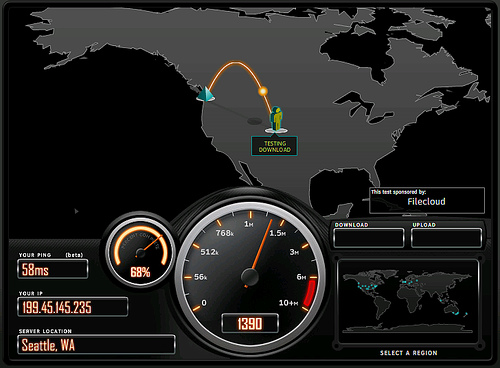Broadcast-to-Broadband: Relinquishment and Repacking
WASHINGTON: The FCC’s 360-page National Broadband Plan, delivered to Congress yesterday, has sparked an outcry from broadcasters who stand to lose a huge chunk of spectrum. The plan calls for broadcasters to hand over 120 MHz of the 300 MHz they use to transmit TV signals--enough for 20 channels in every market.
The imposition comes as TV stations continue to swap out antennas in the wake of the digital transition. Repacking the TV spectrum for further efficiency would mean more such reconfigurations, and a likely increase in signal interference.
Repacking would supposedly occur after broadcasters voluntarily hand over their licenses. David Oxenford of Davis Wright Tremaine LLC in Washington, D.C. summarizes the FCC’s reasoning:
“Throughout the section of the report dealing with the potential recapture of TV frequencies, the commission suggests that the television frequencies are underutilized, and that television broadcasting is not the highest and best use for the channels. In the view of the commission, this spectrum is not being used efficiently at the moment, as many television stations have the ability to transmit their over-the-air signals in less than the full 6 MHz of spectrum allotted to each television station.
“While high-definition programming and opportunities for multichannel operations are possible on the current channel allotments, in the commission’s opinion, too few broadcasters are making full use of the spectrum.”
Throw in 15 percent reliance on over-the-air TV, and the FCC has a weighty argument that the spectrum would be put to better use for wireless broadband.
“Some stations may sell out entirely, while others could agree to share current frequencies--e.g. allowing two stations to each use 3 MHz of one 6 MHz TV channel, allowing the other 6 MHz to be reclaimed by the FCC for broadband use,” Oxenford wrote in DWT’s Broadcast Law Blog.
Broadcasters giving up spectrum would be compensated from resulting auctions.
“The details of how that auction could work are discussed in the report--suggesting that an auction by the FCC where a portion of the proceeds are paid to the broadcaster is the favored method, though a direct sale of spectrum by the broadcaster to the wireless company is an alternative,” he said. “Once stations agree to this voluntary plan, the FCC will take the remaining television stations and repack them into a smaller portion of the television spectrum, to clear up a large contiguous swath of spectrum for broadband users. Broadcasters may need to share spectrum or transmitter sites, reduce coverage, or otherwise modify their technical operations to fit into the more limited allocated television band.”
Oxenford provides further details of the FCC’s rationale for moving broadcasters off the spectrum, including a cost evaluation of the airwaves, at “FCC National Broadband Plan - What It Suggests for TV Broadcasters’ Spectrum.”
(Image by Michael Sauers)

Get the TV Tech Newsletter
The professional video industry's #1 source for news, trends and product and tech information. Sign up below.
